Building communities at Festival of Transitional Architecture
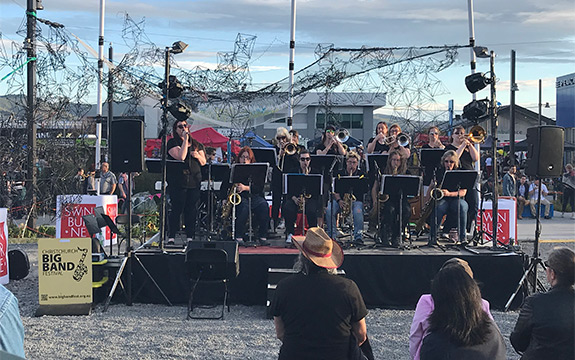
In Summary
- FESTA expands the collective ability to talk about what our cities might be
- Swinburne students create thought-provoking sustainable installation
- Building materials are returned to original source or recycled through the community
Professor of Architecture, Mark Taylor, and a group of Swinburne architecture and design students joined forces at October’s Festival of Transitional Architecture (FESTA), and created a thought-provoking sustainable installation made from simple re-useable low-cost components including coat hangers.
FESTA was established after earthquakes in 2010 and 2011 devastated large parts of the New Zealand city of Christchurch and nearby communities. Over six years, festival organisers have developed a strategy of expanding the collective ability to talk about what our cities might be in the future.
FESTA is one of several community-led events aimed at helping people to come together and seek out positive experience of a changing central city, despite the earthquakes and drawn out rebuild. The major theme for FESTA in 2018 was ‘a public feast of architecture, design and food in the city’.
“The brief was complex and it evolved as the festival timeline neared. Students liaised with the festival organisers to ensure their design was approved by local engineers, the city council, and work health and safety. There was a two-day build period prior to the event and a one-day disassembly time afterwards. The brief required the project to be sustainable, and to ensure any materials used were either returned to their original sources, or recycled through the community,” explains Prof Taylor.
All materials had to be sourced while the team was in Melbourne. This required liaising with suppliers in the Christchurch area to source materials for the installation and have them delivered to the FESTA site.
“The students had a small budget for materials, which enabled the purchase of some items, and also brought in an economic aspect to the project and the necessity to work within a budget,” says Taylor.
“The installation project for the stage area comprised a vertical and horizontal suspended permeable screen made from coat hangers. These were tied together into triangular pyramids. These components were formed into other geometrical shapes including, hexagons and pentagons, that were arranged into a non-regular fragmented geometry,” he says.

Students installing the coat hanger array
“The main picnic area included seating platforms and tables made from pallets and finished with carpet and fabric. Each table was finished with a coat hanger and LED table light. Entryway into the site included an aromatic passageway made from cardboard boxes, with six fragrant scents permeating into the space. Overhead was a suspended fabric mesh with LED lights,” explains Taylor.
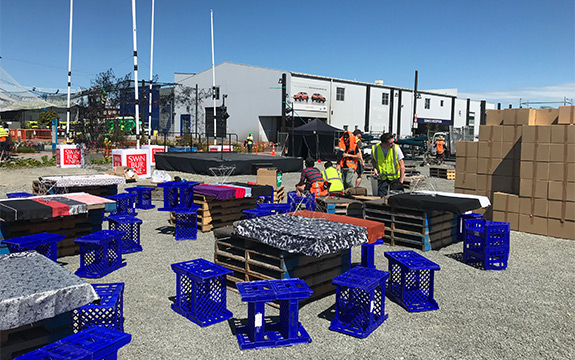
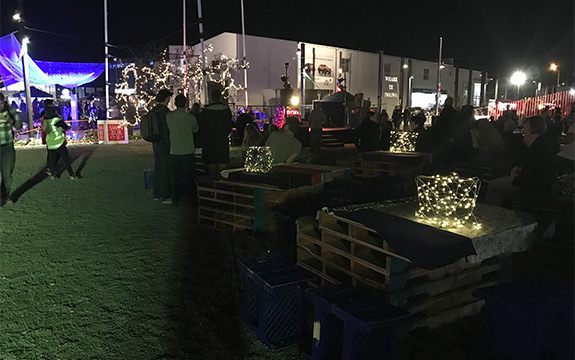
Seating platforms and tables made from pallets
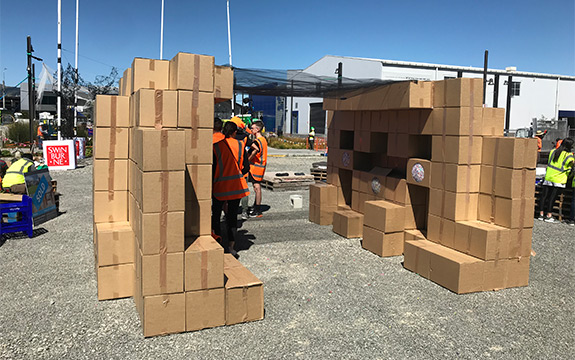
Aromatic passageway made from cardboard boxes
For this authentic learning experience students worked as a group, connecting with the local community and negotiating with suppliers for materials and items. They had the opportunity to engage with post-earthquake Christchurch and to see how the city has responded to the devastation of 2010 and 2011.
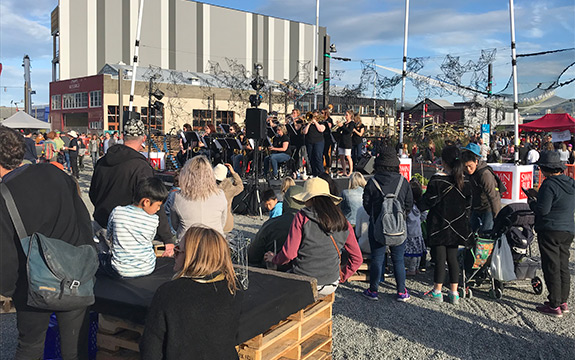
FESTA guests and performers in the installation space
“Working onsite in close proximity to other project groups enabled friendships and opportunities to get to know other students, creating an ambience that was collegial, positive and helpful,” adds Taylor.
Read more news on design at Swinburne.

